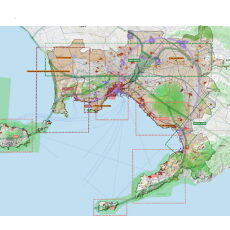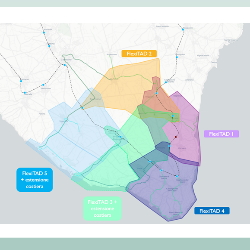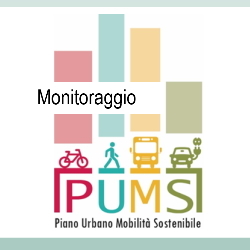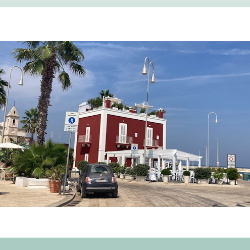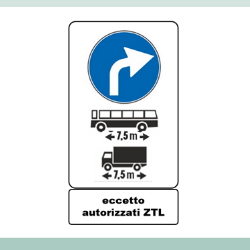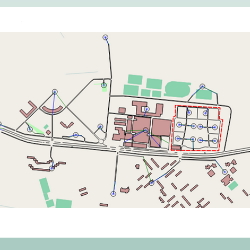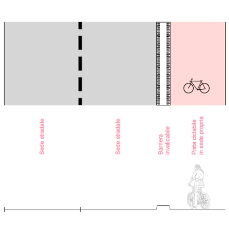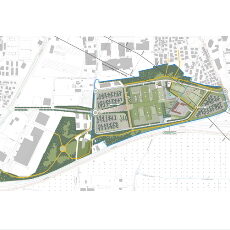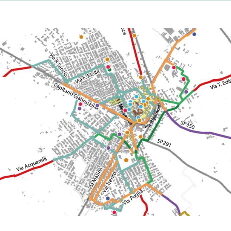- All
- African projects
- assessment
- assessment selected projects
- Assessment selected projects 2
- Assessment selected projects 3
- Assessment selected projects 4
- ASTRA
- Cost Benefit Analysis
- Electric mobility and ITS
- MOMOS
- planning
- planning selected projects
- planning selected projects 2
- planning selected projects 3
- planning selected projects 4
- planning selected projects 5
- projects
- Railways projects
- research
- research selected projects
- research selected projects 2
- research selected projects 3
- studies
- studies selected projects 1
- studies selected projects 2
- studies selected projects 3
- studies selected projects 4
- studies selected projects 5
- TRTingegneria
- TRUST
- urban mobility
- Drafting mobility scenarios for the Territorial Plan for the Metropolitan City of Naples TRTIng, grouped with Telos, Ambiente Italia, Geores, Nemo and Sociolab, was in charge of drafting the Territorial Plan of the Metropolitan (PTM) City of Naples. In particular, TRT supports the working group in analyzing the current assets of mobility and transport infrastructures and in defining future policies and interventions taking into account the SUMP (Sustainable Urban Mobility Plan) of the Metropolitan City currently being adopted. The PTM of the Metropolitan City of Naples wants to be a shared territorial project to effectively pursue the objectives of sustainable development and the reduction of land consumption, strengthening and enhancing the infrastructure networks and public mobility systems in synergy with the SUMP. The plan focuses on urban regeneration and on the redevelopment of the existing building heritage, the upgrading and redevelopment of services and public spaces, the construction of the metropolitan ecological network as well as the protection and enhancement of all landscapes.
- Designing Demand Aligned Transportation System (TAD) of the South Salento Inland Area South Salento – Capo di Leuca is an association of 16 municipalities in Puglia located in the extreme southern tip of the province of Lecce. A territory among those selected by the National Strategy of Inner Areas (SNAI) in which about 125,000 people reside, characterized by phenomena of demographic decline and marginalization. One of the pivotal projects of the territorial cohesion and development strategy, financed through the SNAI with 3.5M€, involves the implementation of a “demand-aligned transport system (TAD)” based on three macro actions: the optimization of existing local public transport services to and from the inland area from the capital and other main service centers (suburban bus and rail service) the reorganization and enhancement of bus lines for connections between the municipalities in the area and between the hinterland and the coast the activation of an additional flexible collective transport service with minibuses (on demand or on call) TRT worked on the study to assess the mobility demand expressed by the area’s population and on the detailed design of the TAD system, including the definition of the operating and governance model and the features and functionality of the IT reservation platform. TAD study and project were based on the results of the European project HiReach, which investigated the issues of inclusive mobility and “mobility poverty” just in South Salento by also testing the first flexible transportation service in summer 2020 in collaboration with Ferrovie del Sud Est (Italian FS Group).
- Drafting of the Monitoring Report of the Sustainable Urban Mobility Plan of the Municipality of Piacenza. Verification of the status of implementation of SUMP measures and performance of indicators representative of the Plan objectives TRT was commissioned by the Municipality of Piacenza to draft the Monitoring Report of the current SUMP (Sustainable Urban Mobility Plan), approved by Municipal Council Resolution no. 57 of 28/12/2020. The activity consists in verifying the implementation status of the measures proposed by the SUMP and to provide the trend of the indicators representative of the plan objectives as selected by the MIT (Italian Ministry of Infrastructure and Transport) Guidelines. The Monitoring Report is functional to highlight the impacts on the mobility system and the environment, in order to establish a transparent relationship between the Administration, citizens and stakeholders on how the objectives identified in the Plan have been pursued. The monitoring activity was also an opportunity to assess the effectiveness of the proposed actions on the basis of the state of implementation of the SUMP and the results achieved so far, and at the same time to lay the foundations for the revision and updating of the SUMP. The activities were structured as follows: Reading the state of implementation of the measures foreseen by the current SUMP in both the Reference Scenario and the Plan Scenario highlighting the interventions completed, under construction, in the final and executive design phase or subject to feasibility studies, as well as the interventions not yet started; Estimation of the indicators provided by the current SUMP in order to identify the changes in the different time horizons examined: base year (2019), state of affairs (2023) and the trend with respect to the achievement of the 2030 targets. In particular, both the minimum indicators by the MIT, the additional indicators required by the Emilia Romagna Region, and the context indicators identified by the Piacenza SUMP were estimated. Finally, the Monitoring Report provides useful indications for the updating phase of the SUMP. In this regard, the targets to 2030 indicated by the current SUMP were compared with those indicated by the most recent instruments (PRIT 2025, PAIR 2030, and RER Strategy 2030) consistent with the choices made in the European and national arena. Based on these aspects, potential areas for intervention when updating the SUMP have been highlighted, with the update expected to be completed by December 2025, five years after its approval. Related projects: City of Piacenza, Sustainable Urban Mobility
- Technical support for the definition and regulation of Limited Traffic Zones in the Municipality of Fasano (BR) Fasano is a municipality in Puglia over 38,000 inhabitants, the second most populous in the province of Brindisi after the provincial capital. In addition to the urban centre, there are 10 other hamlets distributed between the Adriatic coast and the hilly promontory of the Murgia dei Trulli with the Selva di Fasano at over 400 m above sea level. The municipal administration has approved the Urban Sustainable Mobility Plan in 2023. Among the measures identified include measures to strengthen controls and progressive extension of the municipal Limited Traffic Zones (ZTL) and Pedestrian Areas (PA) municipal pedestrian areas. TRT has been entrusted with the elaboration of the implementation scheme of the LTZs. The study provides: the perimeter of the areas subject to regulation (LTZ and AP) with the identification of access and egress points and routes of “repentance’; the introduction of an electronic electronic access control system in the already existing LTZs in the historic centre of Fasano and the marinas of Savelletri and Torre Canne; the drafting of the Municipal Regulation for access, circulation and parking in areas subject to vehicular access restrictions; the analysis of solutions for the management of access permits for the different categories of vehicles/users. Following preliminary analyses and field inspections, TRT structured and shared with the Administration the alternative schemes for regulating vehicular access, indicating: perimeter, positioning of gates, warning and gate signage, access control devices and alternative routes for restricted vehicles. The proposal also includes supporting measures such as buffer parking, proximity parking, shuttle service routes.
- Support for the preliminary verification of a Limited Traffic Zone for heavy vehicles in Locorotondo The Municipality of Locorotondo (BA) has entrusted TRT Trasporti e Territorio with the support service for the definition and subsequent ministerial verification of a Limited Traffic Zone (ZTL) for heavy vehicles controlled by electronic gates and extended to the entire built-up area. The LTZ is aimed at strengthening controls with respect to the already existing ban on vehicles with a full load mass exceeding 3.5t, which obliges heavy vehicles to use the bypass route of the secondary suburban road “Giorgio Petrelli” under the jurisdiction of ANAS SpA and opened to traffic in 2011. The activities conducted by TRT involved the identification of the perimeter of the LTZ and the categories of vehicles subject to access restriction, the design of the warning and gate signage and its positioning, the definition of the temporal validity of the restrictions, the vehicles allowed and the procedures for issuing permits. Guidance was also provided with respect to the electronic control system and parking and loading and unloading areas. The definition of the LTZ was conducted in accordance with the ministerial guidelines on road traffic regulation and signage in limited traffic zones issued in 2019. TRT also provided assistance in the prior assessment phase by the General Directorate for Road Safety of the Ministry of Transport and ANAS SpA for the purpose of the subsequent formal authorisations.
- In-depth transport study of possible urban development related to ‘compartment c’ of the Unipol complex in via dei Missaglia TRT Trasporti e Territorio has been involved by UnipolSai for the technical and transport analysis concerning the feasibility of an independent access to serve the “Building C” area within the UnipolSai property along Via dei Missaglia in Milan. The study envisages the implementation of a dynamic traffic micro-simulation model in order to provide an assessment of the new road reorganisation within the Unipol complex. The simulations take into account the evolution of the occupancy of the buildings of the “Business Park” in the time horizon compatible with the development of the planned residential part. The analyses allow us to verify the impact of existing and future functions along Via dei Missaglia, the road system within the subdivision and at the main intersections.
- Cesena Sport City: network of cycling routes connecting sports areas in Cesena Following the victory in the design competition organized by the Municipality of Cesena in 2021, TRTIngegneria is developing a project for cycling connections as part of a broader activity to prepare the final and executive project, as well as safety coordination, aimed at the redevelopment of five sports areas. The project is named «Cesena Sport City». TRTIngegneria is working in partnership with Degli Esposti Architetti Srl (lead partner), CEAS Srl, various professional architects, engineers, and geologists (Elisa Cristiana Cattaneo, Angelo Bolzoni, Umberto Guerra, and Marcello Brugola), and benefits from the technical consultancy of GVG Engineering Srl. Specifically, TRTIngegneria’s activities involve defining and subsequently designing some cycling routes connecting the city center and the new sports hubs covered by the project. In the development of these activities, a methodology is adopted to emphasize and achieve: the construction of a cycling infrastructure based on the concept of a «city for diachronic sections», which means a timeline that can be traversed with slow mobility for daily commuting; strengthening the «Bicipolitana» and the «VeloCe» projects (as planned in the Cesena SUMP); weaving together internal molecular structures, redeveloping and enhancing existing routes, and implementing small actions through the construction of new sections that integrate existing elements; connecting with bike sharing and bike stop points in the project areas, creating small exchange hubs between motorists and cyclists. The use of roads as public spaces and the desire to establish a direct relationship between the city and the surrounding areas lead to proposing actions that aim to question and overturn the current car-pedestrian and car-cyclist hierarchy, reallocating space from parked cars to improve the usability of public spaces.
- New hospital in piacenza: transport study and cost-benefit analysis for the design of the feasibility study for the new location in area 5 TRT Trasporti e Territorio was commissioned by the Local Health Unit (AUSL) of Piacenza to provide technical support to the design group led by Policreo Srl, with the in-depth studies on the Transport Study and the Cost-Benefit Analysis developed within the Feasibility Study, (drawn up in accordance with art. 14 of Presidential Decree No. 207/2010), of the New Hospital of Piacenza related to area 5 (AL 9), located in the urban sector within the urban ring road, between Corso Europa and Strada Farnesiana. The study is divided into three main activities: the first is about the mobility and parking system related to the current hospital location, analysing in detail the system of roads, parking and public-private accessibility of the area. the second is about the functionality of the road infrastructures serving the new hospital in Piacenza, assessing the impact of the private mobility system, in terms of road infrastructures and the parking system; the third explores cost-benefit analysis issues, comparing the new project of the hospital with the option of maintaining and upgrading the existing hospital. The cost-benefit analysis estimates the project’s contribution to improving the social-economic well-being of the community, i.e. it estimates whether the social-economic advantages, or benefits, outweigh the disadvantages, or social costs. Related projects: Transport study and cost-benefit analysis of the new hospital in Piacenza
- Drafting of the Cycling Mobility Plan of the Municipality of Ugento (Salento), strategic vision to promote cycling for daily travel and for tourism The Municipal Administration of Ugento has entrusted “TRT Ingegneria” with the drafting of the Municipal Cycling Mobility Plan, after obtaining funding from the Puglia Region in 2021. The territory of Ugento is characterised by a strong vocation for tourism. This is due to the possibility of taking advantage of its numerous natural and environmental resources, including its marinas and parks, as well as the presence of a significant historical and cultural heritage. The primary public will for the area is to enhance and support the tourism system, and in this regard, cycling plays a particularly important role. Given the characteristics of the city of Ugento, the proposed bicycle network is developed by integrating the central urban area with the extensive network of existing suburban paths and white roads. This is done to define a complete active mobility network in the entire municipal territory that supports not only daily movements but also recreational and leisure trips. The Cycling Plan proposal considers as a starting point some references projects that involve the municipal territory at various levels. These are “La ciclovia dei Tre Mari”, the ongoing “Project for the construction of bicycle paths in the municipality of Ugento” and the proposal contained in the “Plan for the Ugento Litoral Regional Natural Park “. The plan elaboration was structured in two phases: The first phase, called “Cognitive framework and guidelines”, contains the analysis of the current state of cycling mobility in Ugento. It analyses the supply and demand of cycling routes and related services, as well as the social and environmental impacts. This document also contains the regulatory, planning and programming framework. The second phase, called “Drafting the Plan Document”, contains the definition of the objectives and strategies, as well as the description of the method used to identify priorities for action. The document presents the design of the cycle network, identifies services dedicated to cycling, and communication activities to encourage cycling. Finally, the document is completed by the investment cost estimation and the definition of the indicators for monitoring the planned actions. The Plan was adopted by the Municipal Council on 26.01.2023 and received the declaration of non-subjection to the Strategic Environmental Assessment (SEA) on 21.04.2023 by the competent Authority. On 05.07.2023, it was approved by the Municipal Council.

